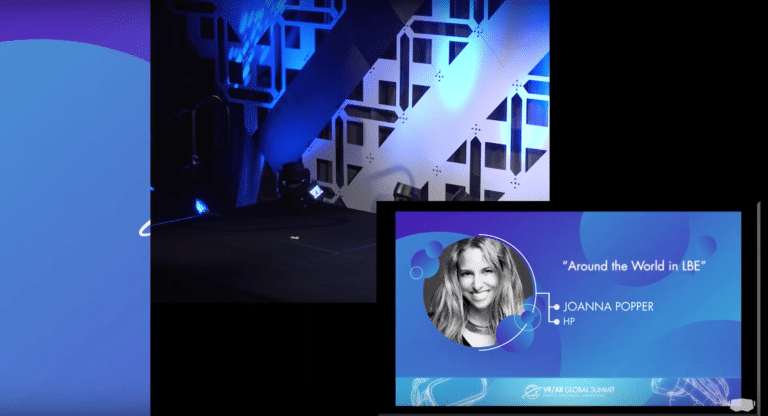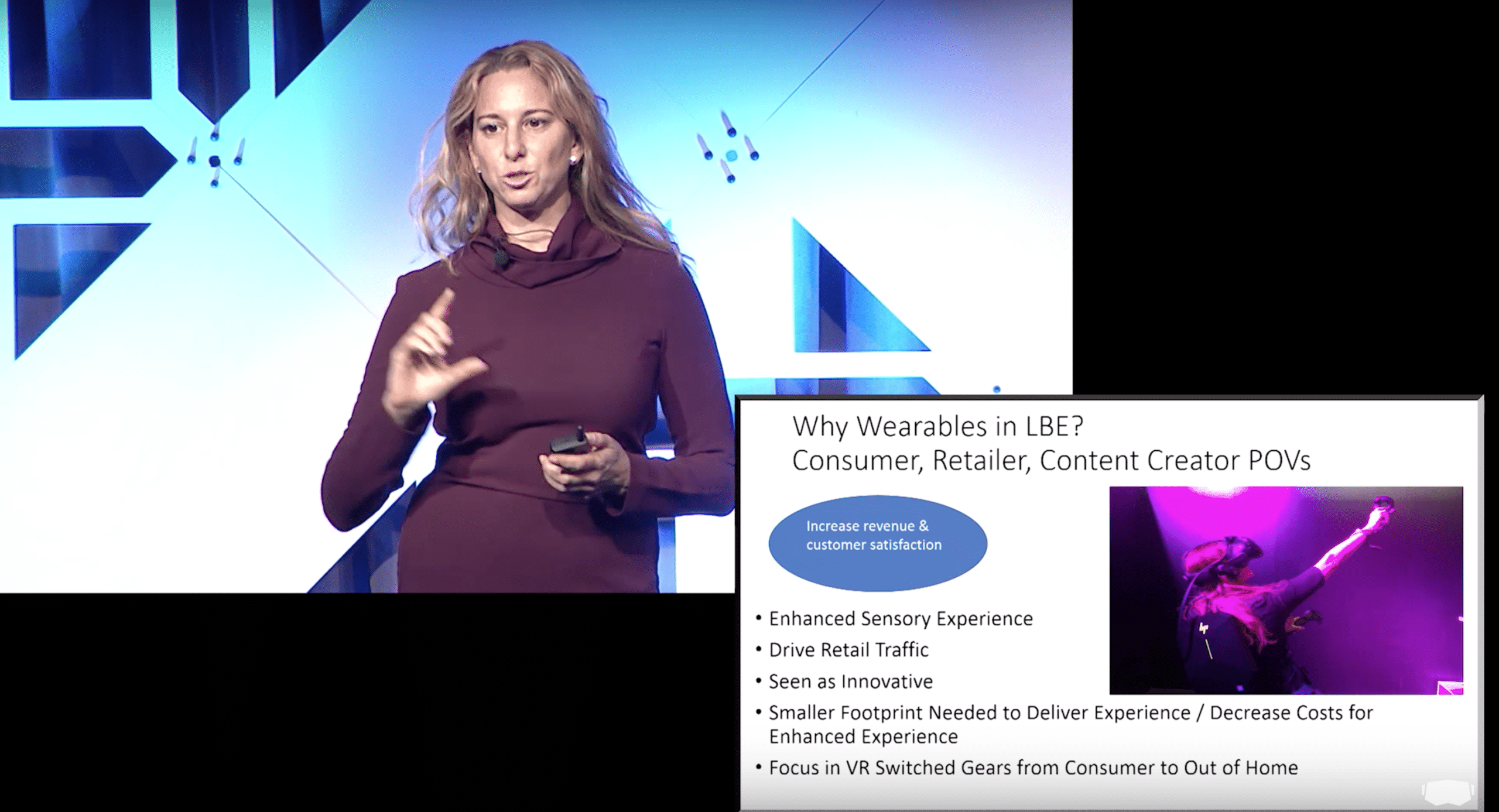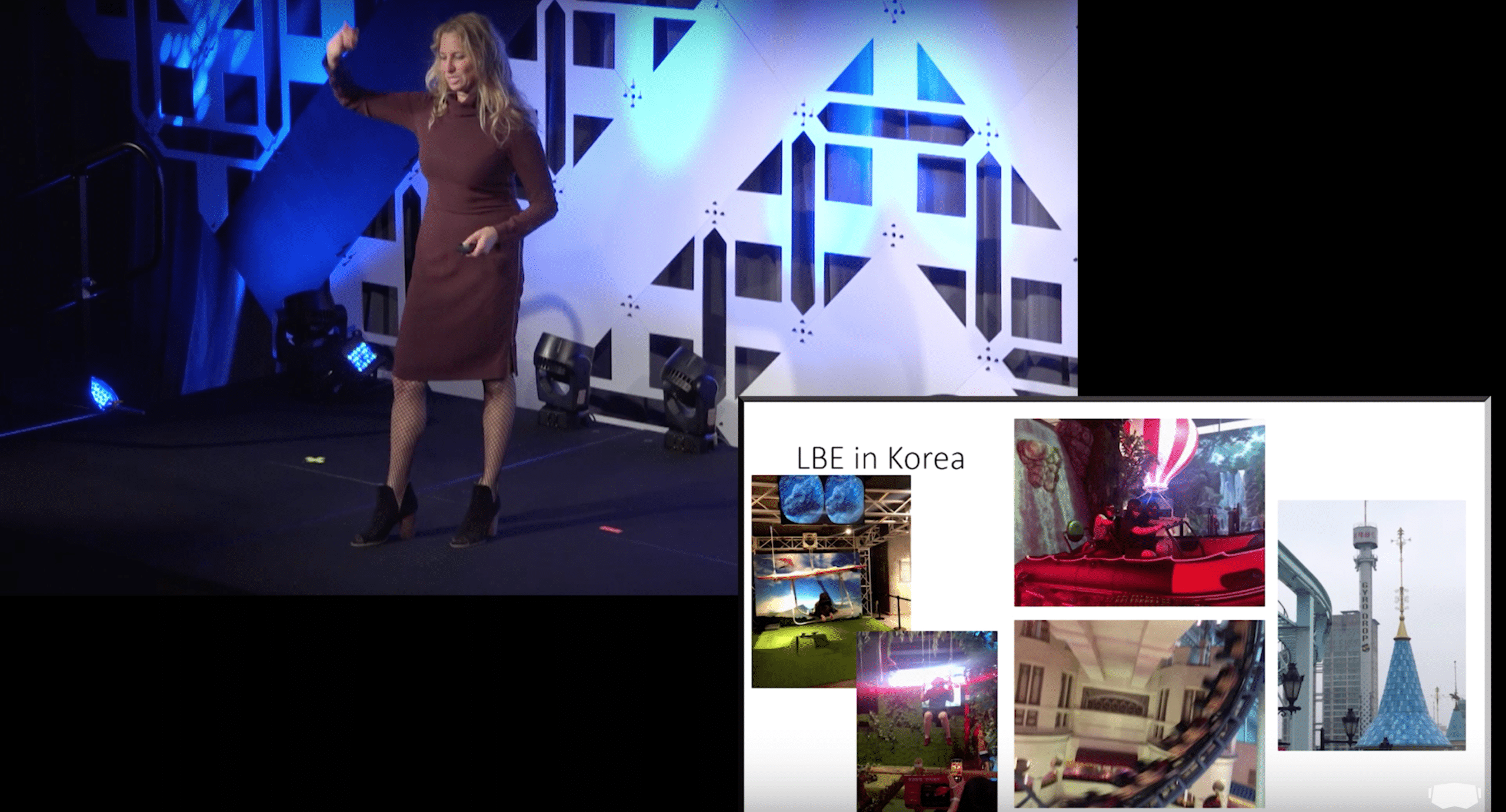
XR Talks is a series that features the best presentations and educational videos from the XR universe. It includes embedded video, as well as narrative analysis and top takeaways. Speakers’ opinions are their own.
Location-based VR — such as VR arcades and free-roam facilities — has pros and cons. On the plus side, it’s primed for early-stage dynamics when most consumers aren’t ready to own VR hardware. We saw similar with arcades in the 80’s before home gaming consoles were a thing.
But there are also challenges… just ask IMAX. The unit economics are difficult in terms of yield optimization, throughput and consistent inventory fill rates (packed on Saturday, empty on Tuesday). Charlie Fink has lots of insights about these dynamics in his book and Forbes column.
Another valuable lesson in LBVR comes to us from Joanna Popper’s recent presentation at the VR/AR Association Global Summit (video below). The HP exec has worked with VR installations such as Dave & Busters’ Jurrasic World experience and a cross-section of others.

So what are her biggest learnings? First is a question of ROI: Why do companies invest in LBVR? Reasons are varied but in lots of cases, it has benefits beyond its own unit economics. That can include driving foot traffic to a given venue which is then monetized in other ways.
“They’re looking at both the revenue it can draw for that specific experience,” said Popper from the stage, “as well as sometimes just driving additional traffic to their location who then may end up buying something else, whether it be food & beverage or spending more time there.”
These insights go beyond dedicated facilities like Sandbox VR. We’re talking entertainment or travel-based brands that are investing in different flavors of on-site VR. That includes everything from Carnival Cruises to Shopping Centers (TheVOID) to the MGM Grand (Zero Latency).
“[MGM] doesn’t always measure it specifically on the revenue that it will draw itself,” said Popper. “They also calculate how much more time someone will spend at the casino or on-premise overall, and then what that means for food & beverage or additional retail sales.”

That makes sense for Casinos where the name of the game is getting you to stay there longer. As for places like Dave & Busters, the reasons are similar but different. One driver, for example, is to bring a roller coaster-like experience to tight indoor spaces with a limited footprint.
Jurrasic World is a good example of that, while also exhibiting best practices that Popper espouses. For one, it was built on strong brand/IP and top quality motion capture work. The elapsed time, throughput and pricing were also optimized for favorable unit economics.
“They did it all for the low price of five dollars per person so every five minutes, four people go through…. twenty dollars every five minutes.” she said. “So at that price point, it’s not out of reach for most people who are attending or going to Dave & Buster’s.”
LBVR can also do a service for the industry. As we heard from Undisclosed Location’s Ryan Andal, the chicken & egg-constrained consumer VR market disincentivizes content creation. But LBVR, with potentially more throughput and monetization, gives content more places to live.
https://youtu.be/VM9pteOF4gQ
“There had been a tremendous amount of focus put on at-home, where the market didn’t grow quite as quickly as some people had hoped,” said Popper. “Many content creators have now switched gears to [LBVR], which means that there’s that much more great content coming.”
For that reason, Popper has seen success with titles that are conducive to an arcade environment and can thus be ported. The best example of that so far is Beat Saber which, in addition to its other merits, has a Dance Dance Revolution-like appeal for arcade environments.
That virality and exhibitionism can be amped when the arcade port of a given title adds sharing functions and sticky game mechanics. Sharing can include mixed reality displays on site and/or broadcasting to Twitch. And leaderboards can engender competitive dynamics and repeat play.
“That brings a lot of interesting things that I think more LBE players will and should be doing,” she said. “Creating an experience that you can take with you: You can bring it back out into the world and show people what you’re doing, and why it looks like it’s so much fun.”

Looking forward, Popper envisions LBVR (and VR in general) being elevated through better biometrics and analytics. That will enable personalization and other signals that media companies salivate over. That includes targeted advertising, though it will take a while to scale.
“With VR, you have the opportunity to have biometrics and analytics in real time,” she said. “In headset advertising, I don’t think we’re quite there yet, and ready to have that reach and scale. But there are interesting companies working on it, so that when we’re there, it’s all ready to go.”
For deeper XR data and intelligence, join ARtillry PRO and subscribe to the free AR Insider Weekly newsletter.
Disclosure: The author of this post is involved with the San Francisco chapter of the VR/AR Association (mentioned above). He nor AR Insider received payment for producing this article. Disclosure and ethics policy can be seen here.
